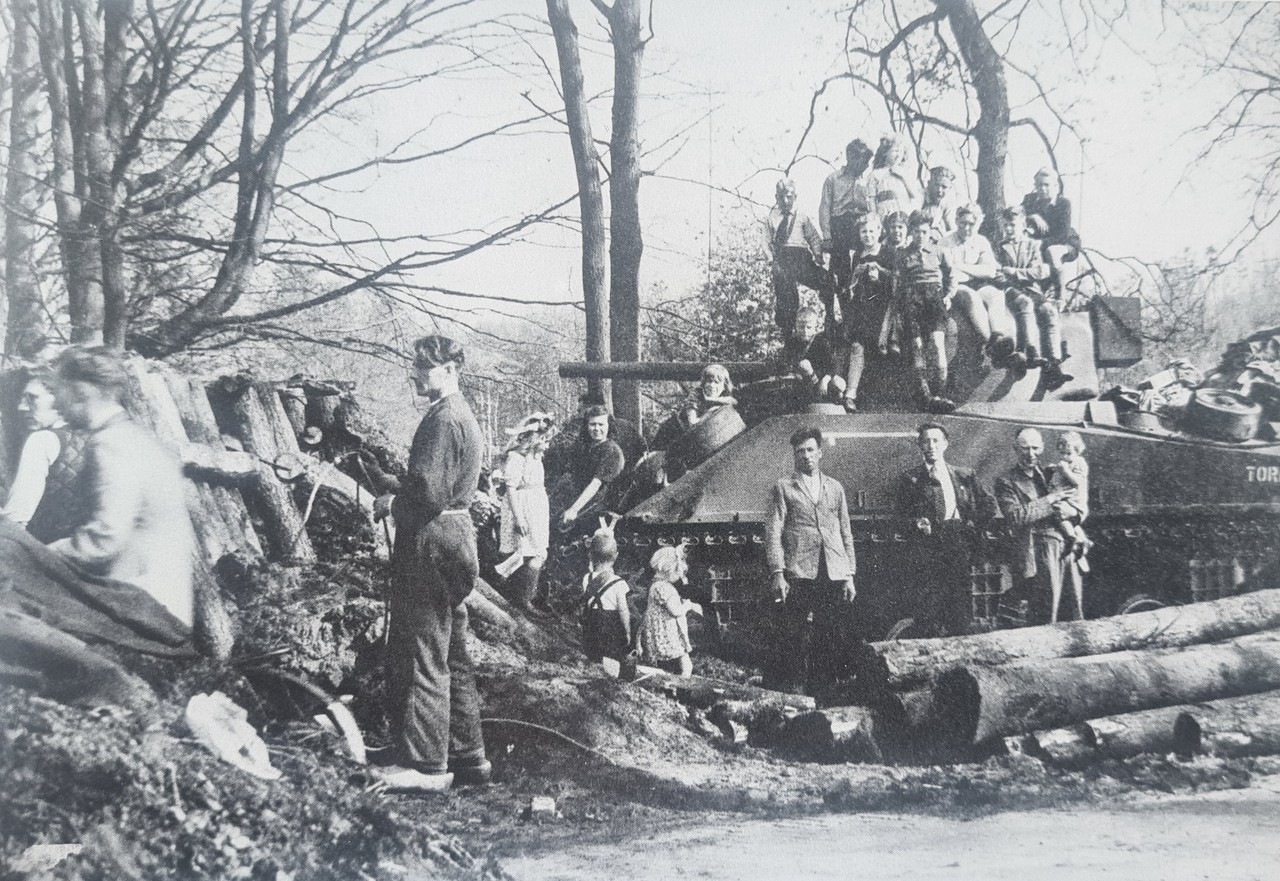Shortly after eight o'clock in the evening, a Canadian tank regiment begins to encircle Voorthuizen. To the northeast of the village, the Canadians spend the night of April 16th to 17th in positions. The troops guarding the Apeldoornsestraat between Apeldoorn and Voorthuizen are attacked just after midnight from Voorthuizen by fifty German infantrymen armed with the notorious German Panzerfausts (anti-tank weapons). The attack is repelled, and the men manage to get a few hours of sleep before the next counter-attack begins at sunrise.
A little after half past five in the morning, Lieutenant B.G. Hurst's platoon is attacked by a group of fanatical young SS troops aged 13 to 16 years old. Thanks to ground mist, they manage to infiltrate the Canadian camp. It rains Panzerfausts and sticky bombs. Only with the help of a flamethrower do Hurst and his men manage to repel the attack. The battlefield counts many dead and wounded, and between one hundred fifty and two hundred Germans are taken prisoner. Hurst receives the Military Cross for his action to repel the counter-attack.
Meanwhile, some Canadian tanks receive orders to go to Otterlo, where the Battle of Otterlo is being fought at that time. The tanks remaining near Voorthuizen are under the command of Major Lloyd Hill. They encounter a strong German position on the Apeldoornsestraat, including the infamous 88mm anti-aircraft and anti-tank gun. Thanks to the courageous actions of platoon commander Ivan Harper, this gun is destroyed along with thirteen Panzerfausts. Fifty-three Germans are captured. Harper is awarded the Military Cross for this action, and Major Hill receives the Distinguished Service Order (DSO) for his actions At the end of Kerkstraat, north of the village, Canadian tanks fall into an ambush and are awaited by one hundred fifty Germans with guns at the hamlet of Prinsenkamp. Five tanks are hit, and a rain of grenades falls in this sector. Thanks to a curtain of smoke, the Canadian tank crew manages to withdraw unharmed.
A large part of the German artillery in Prinsenkamp is finally disabled. The price for this is high. About twenty farms go up in flames. Also, the houses at "De Ring" - the northern part of Kerkstraat, adjacent to Overhorsterweg - are hit by deadly grenade fire. This results in the deaths of 39-year-old blacksmith Jacob Stomphorst, his wife Gerritje and their child Heintje, his sister Hendrika, and his father Willem Stomphorst. The oldest is 71 years old, and the youngest is only 7 years old.
Later in the morning, Canadian tanks and infantry attack Voorthuizen. By two o'clock in the afternoon, the village is finally liberated. The cost is high: there are several civilian casualties during the artillery bombardments, and the material damage is enormous. While the center of Voorthuizen is still being cleared by the Allies, Canadian tanks move on to Putten and the IJsselmeer coast to prevent the remaining Germans from fleeing to West Netherlands, the "Fortress Holland."
